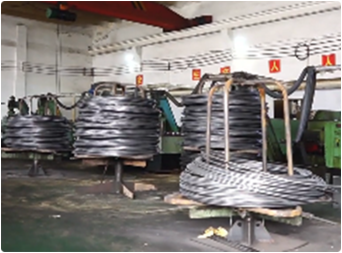Nov . 11, 2024 03:10 Back to list
M10 Anchor Bolt Specifications and Size Guide for Construction Applications
Understanding M10 Anchor Bolt Dimensions
When it comes to construction and engineering projects, the importance of selecting the appropriate anchor bolts cannot be overstated. Among various sizes and types available, the M10 anchor bolt is one of the most commonly used options, especially in applications involving medium to light loads. This article will delve into the dimensions of M10 anchor bolts, their characteristics, and their typical applications.
M10 Anchor Bolt Basics
The term M10 refers to the metric diameter of the bolt, specifically 10 millimeters. The M stands for metric, indicating that this system is based on the International System of Units (SI). Anchor bolts serve a crucial role in providing stability and strength to structures by anchoring them to concrete or other substrates.
Dimensions of M10 Anchor Bolts
The standard dimensions of M10 anchor bolts can vary slightly based on the manufacturing standards and design specifications. However, the following dimensions are generally accepted
- Thread Diameter 10 mm - Thread Pitch 1.5 mm (this is the distance from one thread to the next) - Length Varies according to the application but commonly ranges from 50 mm to 200 mm or more, depending on the thickness of the material to be anchored.
In addition to these standard dimensions, M10 anchor bolts are also available in different lengths and head types, including hexagonal, round, and square. The choice of head type may depend on the specific requirements of the project and the tools available for installation.
Material and Strength Grades
M10 anchor bolts are typically made from high-strength carbon steel. Depending on the project requirements, they can also be coated with materials such as zinc for corrosion resistance. The strength grades commonly associated with M10 bolts include
- Grade 4.6 This grade has a tensile strength of 400 N/mm² and is suitable for less demanding applications. - Grade 8.8 A high-strength variant with a tensile strength of 800 N/mm², which is used in more critical applications that require greater load-bearing capacities.
m10 anchor bolt dimensions

Understanding these strength grades is vital for engineers and project managers, as they ensure that the appropriate bolts are selected for the job, preventing failures under load.
Applications of M10 Anchor Bolts
M10 anchor bolts are used in a variety of applications, including
1. Construction Commonly used to secure structural elements like beams and columns in buildings and bridges. 2. Machinery Used to anchor heavy machinery to the ground or a base, ensuring stability during operations. 3. Infrastructure Employed in securing road signs, light poles, and other fixtures to concrete foundations.
Their versatility and reliability make M10 anchor bolts a popular choice in both residential and commercial projects.
Installation Considerations
When installing M10 anchor bolts, it is essential to follow specific guidelines to ensure proper performance. Key considerations include
- Hole Size The drilled hole must accommodate the bolt's diameter appropriately, typically using a drill bit slightly larger than 10 mm to allow for easy insertion. - Embedment Depth The bolt should be embedded to the required depth, which often depends on the load it is expected to bear and local building codes. - Torque Specifications Proper torque must be applied during installation to achieve the necessary clamping force, preventing loosening over time.
Conclusion
M10 anchor bolts are crucial components in many construction and engineering projects, offering strength, stability, and reliability. Understanding their dimensions, material properties, and proper installation techniques is essential for optimizing performance and ensuring safety in various applications. By choosing the right anchor bolts and adhering to best practices, engineers and builders can enhance the longevity and durability of their structures.


